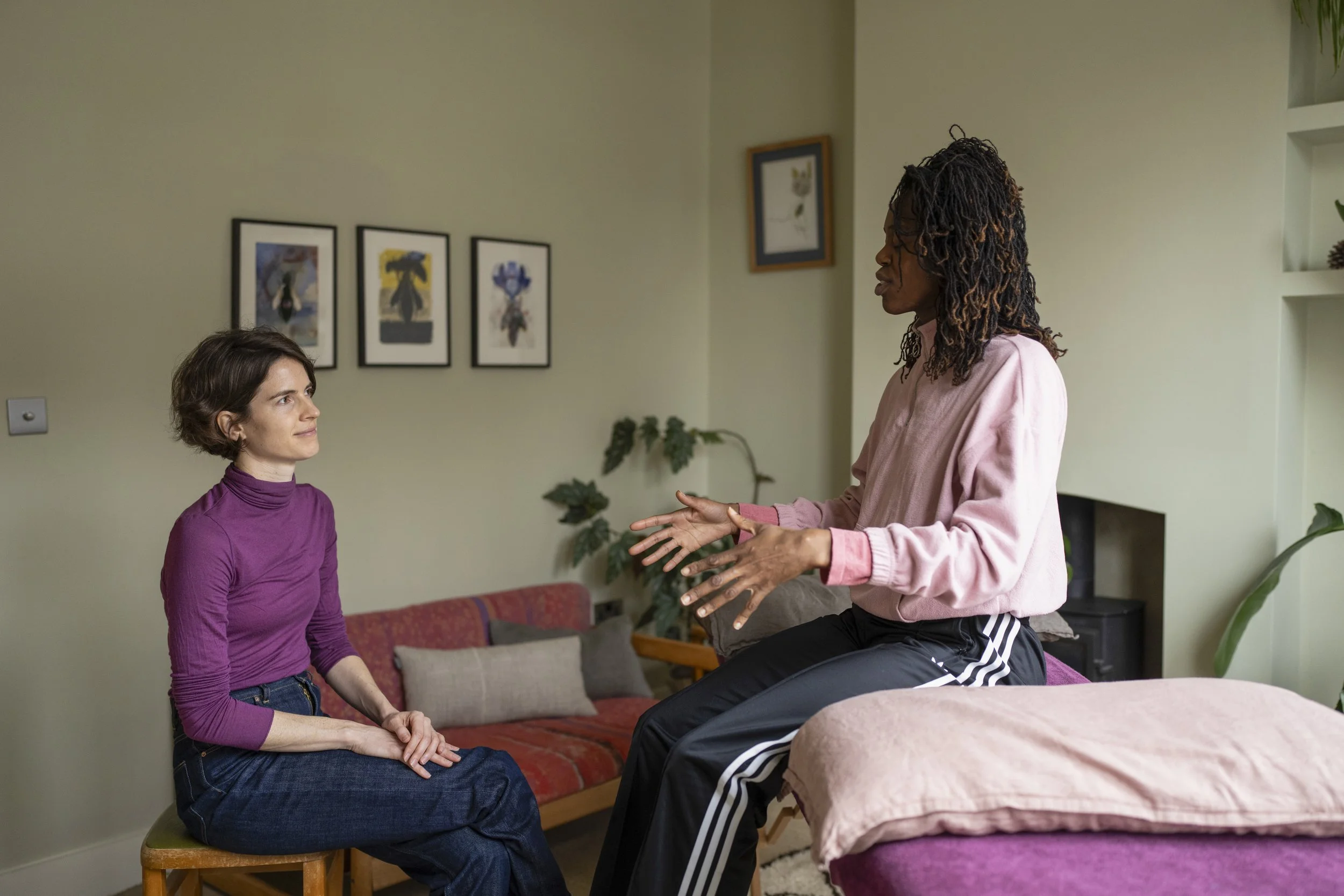What is craniosacral therapy?
Craniosacral therapy is a subtle yet profound and powerful hands-on technique that developed from osteopathy, which has its roots in the traditional indigenous bodywork and healing arts of the Cherokee and Shawnee Tribes.
Craniosacral therapists are trained to feel rhythms, motions and patterns in the body which are more subtle than the heartbeat and lung breathing that we are all familiar with. Biodynamic craniosacral therapy supports the body’s natural tendency to find health and balance by relieving the body of restrictions and alarm and allowing it to settle and realign. Craniosacral therapy often effects structural change, but can also have much wider implications psychologically and emotionally. It can be a tremendous agent in nourishing individuals on a journey of healing and growth.
It can feel like a deeper rest than sleep when we connect with natural forces of health through the support of skilful relational touch. Some clients emerge from sessions feeling grounded and pleasantly stilled while others leave enlivened, a spring in their step.
Over time it is common to experience a deepening of ones own sense of embodiment and the emergence of a more loving relationship with ones body and oneself.
Craniosacral therapy is not intended as primary healthcare, but to work alongside the relationship you have with your doctor. It can work well alongside medical treatment for a condition, talking therapy, or other complementary therapies you may already be receiving.
Who is it for?
People often come to craniosacral therapy for remedial reasons; the catalyst might be pain, injury, illness, psychosomatic ailments, mood changes, or a bereavement or trauma of some sort. Biodynamic craniosacral therapy can also act as a kind of grounding or ‘ignition’ resource for people who are on a threshold or feeling stuck or thrown by events in their lives.
Experiences & conditions I can work with:
Pain - Back / Neck / Joint
Stress / Anxiety
Muscular tension
Emotional distress
Sleep problems
Fatigue
Headaches / Migraines
Bruxism / Teeth grinding
Birth trauma
Colic / Feeding issues
Reflux / Digestive problems / IBS
ADHD
Autism
Trauma / CPTSD
Accidents / Injuries / Shock
Post-Concussion Syndrome
Dissociation / Alienation
Pre-/post-surgery support & recovery
Nervous system dysregulation - Hyperviligence / Shutdown
Fibromyalgia
Depression / Hypomania
Addiction recovery (as part of a wider plan)
Grief
Please get in touch if you would like to enquire about your particular issue.
Craniosacral therapy is well known for treatment of newborns and babies as it is so effective at resolving birth trauma and any feeding and digestive issues that may crop up postnatally. It can also provide invaluable support for childbearers during the second and third trimesters of pregnancy. Biodynamics can be equally efficacious as a palliative end of life care treatment, helping people to have an easier death. Craniosacral therapists can act like doulas supporting transitions at all stages of life.


